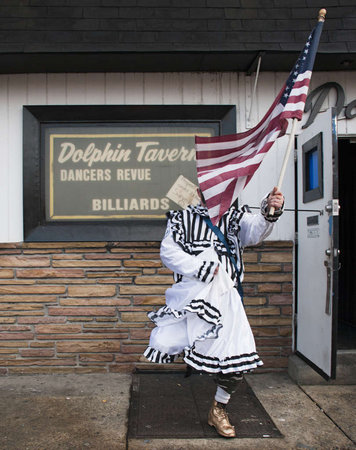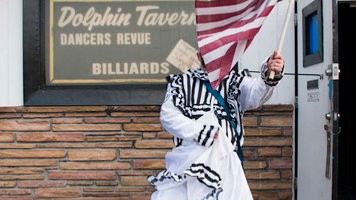Philadelphia was everything that Boston could never be. After two miserable years of living in Massachusetts and desperately seeking an out, a weekend visit to Philly during the Odunde Festival did me in. The streets were crowded with black people. Their beauty was an overwhelming barrage to the senses. Booths burst with vibrant African prints. The heady scents of Nag Champa, Egyptian musk, and frankincense mingled on the breeze. People adorned themselves with cowry shells and high-piled turbans. A dreadlocked man whose skin glistened like onyx in the summer heat offered to give me a henna tattoo. I happily obliged. Meanwhile, staked out on a grimy little square of sidewalk, a DJ spun records en plein air. Men approached the turntables to tap fists with him. It was the mother of all block parties. Everything about Philly felt like home. I stayed a few extra days, found an apartment, went back to Boston, packed up my things and moved.
Philly is familiar, like that uncle or cousin in your family—the one who has his life together now but has a real checkered past. It is that old-school auto mechanic in his Sunday’s best. No matter how well dressed, he can never fully rid himself of the dark grime beneath his fingernails. Philly has rough edges. The city, its stars, its landmarks are all relatively unassuming. Every event is a glorified block party, every festival a family reunion. The Mummer parades are no exception.
Philly is familiar, like that uncle or cousin in your family—the one who has his life together now but has a real checkered past.
I should admit now that I fear Mummers in the same way that I fear large groups of overzealous sports fans after a big game. Droves of drunken men in costume unsettle me. The New Year’s Day parades are rowdy processions that guarantee healthy doses of debauchery, exhibitionism, and machismo. I worked at a bar on the Benjamin Franklin Parkway during the holiday. We often caught disoriented and inebriated Mummers urinating in the foyer of our building. On any other day, we would deny them entry, but this was New Year’s in Philadelphia. It would be treason to turn a Mummer away, so every year we welcomed raucous Mummers clad in outlandish costumes into our bar.
Zoe Strauss’ “Wench with Flag in Front of Dolphin” speaks to everything that I love about Philly. It captures both the spirit and the mystery of the Mummers and of the city itself. The flag obscures his face, but at the same time, the whimsy of its flowing shape adds an element of playfulness to the photograph. The wench’s costume, accented by gold boots, reinforces the frivolity of the scene. At the same time, there are hints of danger in the photograph: the swath of camouflage that peeks out from under the dress, the hand-scrawled warning sign haphazardly thrown into the Dolphin display like an afterthought. That little sign implies, in trademark Philly style, that it’s all fun and games, but don’t mess with us. Don’t overstep. Don’t get it twisted.
I envision the wench’s buddies inside singing and playing pool in various states of Mummer undress. I’m sure that someone nearby is giving dap or slapping shoulders in the way that men do when they are feeling especially fraternal. The Dolphin façade resembles every other neighborhood go-go bar in the city. The fact that the door is propped open speaks to Philly’s down-to-earth accessibility—come one, come all.

